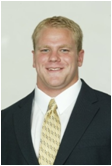An alien visits your athletic training room during your fall pre-participation physicals where you are performing your standard evaluations consisting of height, weight, blood pressure and pulse.
"I see you measuring everyone's height?" The alien asks. "You must have a terrible shrinking problem that you want to keep track of and monitor closely?"
"Well no, we just measure their height, record it in their chart and it's never looked at again."
The alien scratches his tentacles inquisitively, "Well surely then you must be tracking closely their body weight and have a terrible case of weight gain here which you then correlate to health and performance parameters later on?"
"Um, not exactly, once in a while the football coach wants to know how much weight a kid gained, or we use it maybe once a year to track a sudden loss in weight for athletes with eating disorders, but other than that it's usually recorded and forgotten about."
The alien stands puzzled even further. An awkward silence sets in until the alien proudly bursts out, "I see you taking blood pressure and pulse?" His pride obvious now, "surely this population you work with has a high rate of cardiovascular disease in which you must observe, monitor, treat and watch closely yes?"
"Well actually, the athletes we see are 18-22 years old and rarely suffer from cardiovascular disease although we do manage to find some outliers that escape their home physician and we are able to help them, but this number is very small."
"Tell me then, what evaluation is taking place on those tables across the room?" the alien asks, pointing at the row of treatment tables filled with athletes covered in ice bags.
"That's not an evaluation, that's treatment for injuries the athletes have sustained from running, jumping and throwing too much."
"Do those injuries happen often?" the alien asks.
"Yes, all the time! You should see the athletic training room in the afternoons," beamed the young athletic trainer. "Some days you can hardly get enough ice bags or e-stim machines available for everyone."
"And you say this happens all the time?"
"Yes, yes - every year! It basically takes up our entire day. Some days I have to stay a couple of hours late after work just to get enough ice and e-stim on everyone"
The alien obviously troubled asks, "So what evaluations do you do for those athletes prior to becoming injured? For the athletes with the ice bags on their backs, ankles and knees?"
"We don't do any evaluations for those things," the athletic trainer responds.
The alien reaches into his solar-pack, grabs his intra-planet communication device and radios back to base, "requesting immediate pick-up! No intelligent life here."
Now, I can poke fun and joke about this "processing of data" or should I say, lack thereof because I'm an athletic trainer and have caught myself doing this. I'm not trying to minimize the importance of cardiovascular screening in the least. I do however think that we might be missing a golden opportunity to screen and address for other problems that take up the majority of our days along with the usual screening tools?
How many kids with high blood pressure do you refer and care for compared to the number of kids you evaluate and treat with anterior knee pain? Did you wait until the kid's heart hurt to measure his blood pressure? Then why wait until the kid's knee is swollen to evaluate his hip strength? ROM or ankle mobility?
Let's prove the alien wrong this fall.
Art Horne is the Coordinator of Care and Strength & Conditioning Coach for the Men's Basketball Team at Northeastern University, Boston MA. He can be reached at a.horne@neu.edu.
A special thanks to Matt Nichol who presented at the Second Annual Boston Hockey Summit and Basketball Symposium who challenged each attendee to look at the way we currently do business with a fresh set of eyes.




